Which medical schools are the best in the nation for aspiring physicians? We’ve compiled a meticulously researched ranking of the top medical schools in the United States.
What to Look for in the Top Medical Schools
What attributes position an institution among the best medical schools?
Accreditation: The practice of medicine is highly regulated, so attending an accredited medical school is essential for aspiring practitioners. All of the medical schools that landed a spot on our medical school rankings list are accredited by the Liaison Committee on Medical Education. This accreditation body accredits allopathic Doctor of Medicine (MD) medical schools in the United States. (Accreditation of medical schools that award the Doctor of Osteopathic, or DO, medical degree instead is conferred by the American Osteopathic Association’s Commission on Osteopathic College Accreditation.)
Opportunities for Experience: The reason you’re applying to medical schools is primarily to acquire the medical training needed to practice medicine. All accredited medical schools include practical rotations that allow students to develop the hands-on clinical skills they will use throughout their careers in medicine. However, some medical schools offer specific opportunities for students to gain experience in certain medical specialties, work with underserved communities or just begin their clinical training earlier in the course of their med school education.
RELATED: Top 10 Highest Paying Medical Specialties
Cost and Financial Aid: Medical school is expensive no matter where you go, but students should still be aware of how much they are spending on their education and what financial aid is available at various medical schools to make their education more affordable.
RELATED: Highest Paying Degrees in Medicine – Majors & Careers
Curriculum Content and Options That Match Your Interests: All medical schools train students for the clinical practice of medicine. However, not all medical schools incorporate research, scholarship or community health into the curriculum. Our list includes medical schools and programs that offer combined degree programs, research opportunities, specialized concentrations in clinical practice or scholarly inquiry and much more.
RELATED: How Long Does It Take to Become a Doctor?
1. New York University Grossman School of Medicine

New York University is home to two medical schools, the Grossman School of Medicine in New York City and the Long Island School of Medicine in Mineola, NY. Both medical schools have their strong points, but if we’re only including one NYU med school on our list, we have to give the edge to the Grossman School of Medicine, which dates back to 1841.
The Grossman School of Medicine (along with NYU Long Island School of Medicine) is part of the NYU Langone Health academic medical center, which U.S. News & World Report named the third-best hospital in the United States under its Best Hospitals for Adults 2022-23 rankings list.
NYU is a private research university, and the Grossman School of Medicine continues that tradition with excellence. Faculty at the NYU Grossman School of Medicine received $815 million in funding from National Institutes of Health awards alone in 2021, including a $450 million grant to study the long-term health effects of contracting COVID-19. The medical school’s extensive research activities prompted U.S. News & World Report to rank NYU Grossman School of Medicine second on its list of best medical schools for research.
RELATED: Do I Need to Have a Medical Degree to be Involved in Clinical Research?
The medical school also tied for ninth place in the specialty of psychology, 11th in radiology and 48th in primary care and claimed the 12th-place spot in obstetrics and gynecology.
One unique aspect of the Grossman School of Medicine at New York University is that it offers both a traditional four-year MD curriculum and an accelerated three-year MD program. New York University calls the accelerated pathway “the first of its kind at a nationally ranked academic medical center,” although according to U.S. News & World Report, the accelerated medical degree program established in 1969 at McMaster University Medical School in Canada has served as a “role models” for the other medical schools, like NYU’s, that have since implemented accelerated programs.
One of our favorite points about NYU Grossman School of Medicine is its tuition-free initiative. All students enrolled in the MD program receive Full-Tuition Scholarships – not dependent on financial need or merit – that, as long as the student continues to maintain satisfactory academic progress, cover “the majority” of the cost of going to medical school.
NYU Grossman School of Medicine is a competitive institution. Of the 8,361 applications received for the class that matriculated in 2022, only 1,037 applicants were even granted interviews, and just 102 students ultimately matriculated. Among the school’s incoming class during the 2021 admissions cycle, the average GPA was 3.92, and the average MCAT score was 522.
2. Johns Hopkins University School of Medicine
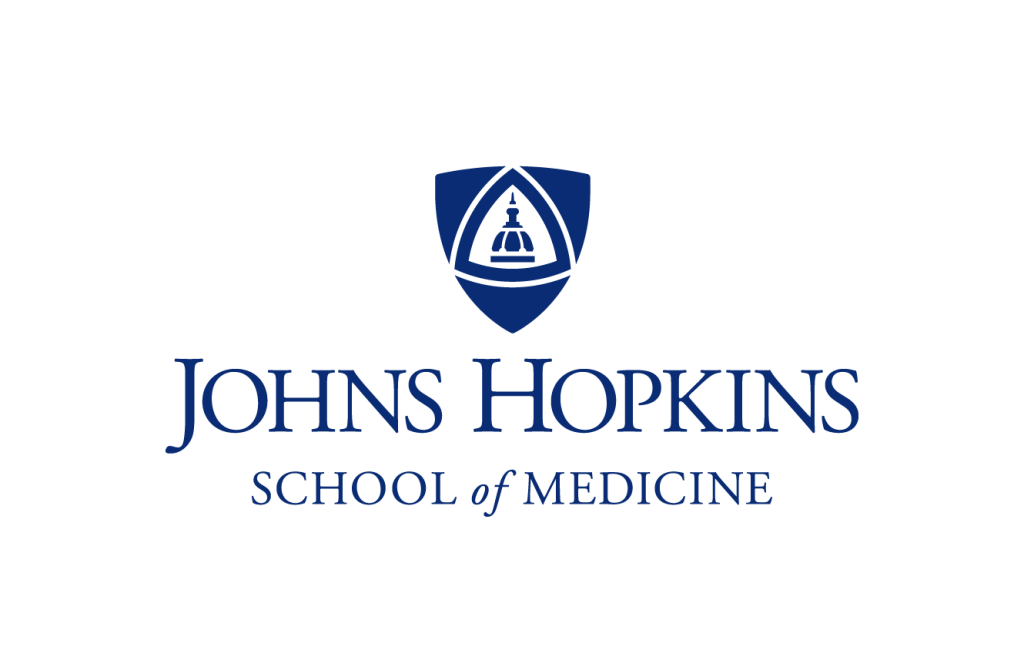
The Johns Hopkin School of Medicine at Johns Hopkins University in Baltimore, Maryland, is affiliated with the John Hopkins Hospital, among other well-regarded medical facilities, it’s no surprise that this is one of the most highly respected medical schools in the nation.
In addition to its MD program, Johns Hopkin School of Medicine offers an MD/MBA dual-degree course of study and three combined degree paths that award an MD along with a Master of Public Health degree, a Master of Science in Health Care Management degree or a PhD.
The MD curriculum at this medical school, called the Johns Hopkins Genes to Society curriculum, is informed by the findings of the Human Genome Project. Throughout all four years of study, medical students at Johns Hopkins University will encounter the core themes of biological mechanisms, health systems science and the culture of medicine integrated into the curriculum through scientific, social and clinical Horizontal Strands. The core clerkships through which students gain clinical skills include medicine, surgery, neurology, psychiatry, pediatrics and obstetrics and gynecology.
RELATED: What Major Do You Need to Be a Surgeon?
Johns Hopkins School of Medicine tied for third in the nation on U.S. News & World Report’s list of the best medical schools for research and tied for 52nd place among the top medical schools for primary care. Among specialties, the school ranked first in internal medicine and radiology and tied for first place in surgery.
U.S. News also ranked Johns Hopkins School of Medicine second for anesthesiology, third for psychiatry, fourth for pediatrics and tied for sixth for obstetrics and gynecology. In 2019, Forbes ranked Johns Hopkins University as tied for 16th place on its America’s Top STEM Schools for Women list.
Johns Hopkins University School of Medicine reported a 6.3% admission rate. Out of the 4,548 prospective students who applied for the MD class of 2026, 287 were accepted and only 118 matriculated. The average GPA for incoming students was 3.94, and the average MCAT score was 521.
For the 2022 through 2023 school year, the tuition and fees for medical students at Johns Hopkins University amounted to $66,173 for the first year of study, $65,433 for the second year of study, $65,233 for the third year of study and $64,099 for the fourth year of study. The school awards 85% of enrolled MD students financial aid packages funded through the 150+ scholarship and loan accounts the school has received from alumni and donors. As a result, graduates from Johns Hopkins University School of Medicine report a student loan debt amount below the average for private medical schools.
3. Harvard Medical School at Harvard University

Harvard University in Boston, MA, is a prestigious institution. It’s no wonder that the medical college associated with the Ivy League School is just as prestigious.
U.S. News & World Report ranked the medical school, which was founded in 1782 and is the third oldest medical school in America, as the best in the nation on its 2023 list of the best medical schools for research and ninth in the nation among medical schools for primary care practice. Harvard Medical School was also ranked #1 in anesthesiology and psychiatry, and it tied for first place in the specialties of surgery and obstetrics and gynecology.
U.S. News also ranked Harvard #2 in internal medicine and radiology and tied for second place in pediatrics. Harvard University as a whole also tied for first place on Forbes‘ 2019 list of America’s Best STEM Schools for Women.
Harvard Medical School at Harvard University awards Doctor of Medicine (MD) degrees, as well as PhDs and master’s degrees. Through its Harvard School of Dental Medicine, students can also pursue a DMD for practitioners or a Doctor of Medical Sciences (DMSc) degree for researchers. The medical school at Harvard University offers a number of dual-degree programs, including programs that lead to an MD degree along with a Master of Public Health (MPH), Master of Business Administration (MBA), Master in Public Policy (MPP), Master of Academic Discipline (MAD) and Master of Medical Science (MMSc) degrees in areas like medical education, clinical investigation, immunology and global health delivery. Students interested in medical research should consider applying to the MD-PhD combined program. Of the 12,311 total faculty employed by Harvard Medical School, 35 have been appointed Howard Hughes Medical Institute Investigators, and one has been appointed an HHMI Professor.
A medical education at this institution consists of three tracks: a pre-clerkship phase, a principal clinical experience phase and a post-PCE phase. Most medical students participate in the traditional MD track, called the Pathways track, but around 20% of students instead enroll in the Health Sciences and Technology track that prepares students for academic research projects as well as the clinical practice of medicine. The core clerkships students must complete during the principal clinical experience phase of their education include general medicine, primary care, surgery, radiology, psychiatry, neurology, pediatrics and obstetrics and gynecology. Students complete these rotations in facilities such as Massachusetts General Hospital, the Beth Israel Deaconess Medical Center, the Boston Children’s Hospital and Brigham and Women’s Hospital.
An average acceptance rate of just 3.3% makes Harvard a highly competitive medical school. Applicants reported an undergraduate average GPA of 3.9 and an average MCAT score of 520.06.
If you beat the odds to get accepted into the medical school at Harvard, you may end up with less student debt than the average medical school graduate. Although tuition for the 2021 through 2022 academic year amounted to $67,610 and fees increased the cost of attendance by an additional $5,981, the average graduating debt for Harvard Medical School students was $108,382 – almost 40% less than the $179,679 national average graduating debt reported for medical school students.
4. University of California–San Francisco School of Medicine

At the University of California–San Francisco School of Medicine, the MD program consists of three phases completed over four years of study and clinical training.
The Foundations 1 portion of the curriculum emphasizes coursework in basic sciences and clinical sciences. The Foundations 2 phase is a 48-week clerkship-focused phase of the program during which students complete short elective Clinical Immersion Experiences and gain hands-on training in clinical settings in medical specialties like family and community medicine, internal medicine, surgery, anesthesiology, neurology, psychiatry, pediatrics and obstetrics and gynecology. The Foundations 2 phase of medical school ends with the Step 1 Clinical Performance Exam. Finally, the 61-week Career Launch phase of the MD curriculum includes advanced clinical rotations in students’ areas of interest. They also complete a required Specialty Practice Ambulatory “sub-iNternship,” or SPAN, and work on a scholarly Deep Explore research project.
Under the MD program’s Bridges Curriculum, students develop competencies in medical knowledge, patient care, practice-based learning and improvement, systems-based practice, professionalism, interprofessional collaboration and interpersonal and communication skills.
U.S. News & World Report ranked the University of California–San Francisco School of Medicine second in the nation for medical schools in primary care specialties and third in the nation for research. The school excelled in several medical specialties, ranking #1 (tied) for obstetrics and gynecology, #3 for internal medicine, #4 for both anesthesiology and psychiatry and tying for fourth place in radiology, #5 in both surgery and pediatrics and #6 in family medicine.
For the entering class of 2022, just 544 out of the 9,090 total applicants snagged an interview, and only 167 students ultimately enrolled in the MD program. The median GPA for entering students was 3.87, and the median MCAT score of accepted students was in the 90th percentile.
For in-state students of the University of California–San Francisco School of Medicine, the total cost of tuition and fees – including the $11,700 tuition amount and the professional degree supplemental tuition cost of $25,221 – is $45,131 for the first two years and $49,167 for the last two years, under the 2022 through 20230 cost of attendance. Non-residents pay a separate non-resident tuition cost of $12,245. All told, including the cost of living expenses and books and equipment, California residents who attend this institution can expect to spend $78,086 per year, and non-resident students are looking at $90,331. However, medical school students at the University of California–San Francisco borrowed an average of $140,293 – 30% less than the $207,003 average medical school loan debt reported for 2020.
5. Columbia University Vagelos College of Physicians and Surgeons

The school of medicine at Columbia University in New York, NY, is called the Columbia University Vagelos College of Physicians and Surgeons and has educated medical doctors for more than 250 years. This MD-granting institution is ranked tied for third place nationwide on U.S. News & World Report’s list of the best medical schools for research and #75th in the nation in the major category of the best medical schools for primary care education.
Columbia University Vagelos College of Physicians and Surgeons was also ranked second in the nation for the specialty of psychiatry, fifth for both anesthesiology and obstetrics and gynecology, sixth for internal medicine, seventh for surgery and tenth for radiology. In 2019, Forbes ranked Columbia University as tied for tenth place on its list of America’s Top STEM Schools for Women.
MD students participate in 18 months of preclinical coursework, with classes in clinical gross anatomy, molecular mechanisms and disease, histology and pathology, the foundations of clinical medicine, psychiatric medicine and health and disease in the body. After they complete their basic sciences coursework, students enter the Major Clinical Year phase of their education, during which they complete 12 months of clerkships in areas like primary care, surgery, orthopedics, internal medicine, neurology neurosurgery, psychiatry, urology, obstetrics and gynecology and pediatrics. A 14-month Differentiation and Integration phase of medical school education, in which students take clinical and research elective courses and work on a scholarly project, follows the clinical year.
If you’re particularly interested in rural medicine – and you’re a high achiever – an exclusive program within the Columbia University Vagelos College of Physicians and Surgeons may be of particular interest to you. Each year, 10 students receive the honor of being admitted to the Columbia-Bassett track. The school also offers numerous dual-degree programs that pair the MD program with coursework in areas like biomedical sciences, public health, business, biomedical engineering and biomedical informatics.
Columbia University received 8,080 MD program applications for the Class of 2025 and interviewed 852 applicants, ultimately admitting 140 new students. Among applicants who received admissions offers for the 2022 application cycle, undergraduate GPAs ranged from 3.44 to 4.0 and MCAT scores ranged from 508 to 528.
The school charges a flat tuition rate per year that, for the 2022 through 2023 year, amounted to $68,820 (plus fees). All told, first-year students paid $75,624, and second- through fourth-year students paid $75,374 in tuition and fees, not counting living expenses, books, equipment, exam fees and other educational expenses.
6. Stanford University School of Medicine

The School of Medicine at Stanford University in Palo Alto, California, offers five distinct MD pathways under its Discovery Curriculum. The new and redesigned courses that populate the curriculum allow students to receive a higher-quality education that still continues in the tradition of the school’s established medical training curriculum. Under the Discovery Curriculum, students have more opportunities to pursue dual degrees in areas like public health, public policy, business and bioengineering and to gain scholarly research experience through two-year and three-year options for pre-clerkship coursework.
RELATED: Is a Bachelor’s Degree in Bioengineering a Good Direction to Go If I Want to Go to Medical School?
Required clerkships for MD students at Stanford Medicine include general medicine, general surgery, family medicine, emergency medicine, ambulatory medicine, critical care, neurology, psychiatry, pediatrics and obstetrics and gynecology. Depending on which of the five pathways students take, their coursework can be completed in as little as four years (a traditional MD with a scholarly concentration) or take as long as seven to eight years (for an MD/PhD program).
The Stanford University School of Medicine was named eighth in the nation on U.S. News & World Report’s list of the top medical schools for research and tied for 30th place among the best medical schools for primary care. The school also ranked highly for several medical specialties, including anesthesiology (sixth place), radiology (seventh place), surgery (eighth place), psychiatry (eighth place), pediatrics (tied for eighth place), internal medicine (ninth place) and obstetrics and gynecology (tied for ninth place). Stanford University was ranked in a tenth-place tie on Forbes’ list of America’s Top STEM Schools for Women in 2019.
Stanford University School of Medicine is, according to U.S. News & World Report, the second most selective medical school in America, with an acceptance rate of just 1.4%. The Stanford Medicine entering class of 2020 included just 90 students selected out of 6,800 applications. Just 470 applicants were even granted interviews, and 152 of them received admissions offers.
Stanford University isn’t a cheap medical school to attend. MD students paid a quarterly tuition rate of $21,249 for the 2020 through 2023 school year, which added up to $84,996 for just one year of medical school – not counting fees, living expenses or the cost of books and equipment.
7. Duke University School of Medicine
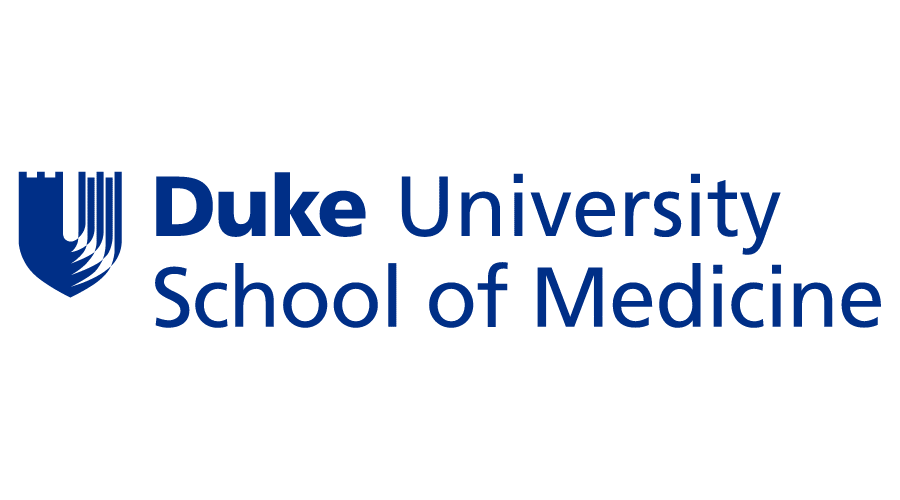
At Duke University School of Medicine in Durham, NC, the four-year curriculum of the MD program is packed with more scholarly and clinical training than the typical medical school curriculum. The program reimagines the traditional medical school plan of study to condense it into three years, allowing students to also pursue biomedical research projects during their medical training and still graduate at the same time as their peers in conventional MD programs at other schools.
Duke University medical students cover their core basic science classes during their first year and jump right into clinical clerkships in general medicine, family medicine, radiology, surgery, neurology, obstetrics and gynecology, pediatrics and psychiatry in their second year of medical school. Their third year presents opportunities for extensive research, as well as clinical training through elective rotations. Students’ fourth year of study consists of clinical electives and a capstone course.
U.S. News & World Report ranked Duke University as tied for sixth place in the nation among the best medical schools for research and tied for 78th place among the top medical schools for primary care practice. The school ranked highly for several medical specialties, including anesthesiology (#3), surgery (#3), internal medicine (#5), radiology (#6), obstetrics and gynecology (#8), pediatrics (tied at #8) and psychiatry (tied at #9). Duke was also tied for fourth place in that nation on Forbes’ 2019 list of America’s Top STEM Schools for Women.
A minimum MCAT score of 500 is required to apply to the Duke University School of Medicine, and the median MCAT score of applicants who received admissions offers was 520. Among MD students who matriculated in 2022, the median undergraduate GPA range was from 3.7 to 3.9 and above. Of the 4,798 applicants who submitted completed applications that admissions cycle, 541 were interviewed and 105 were matriculated.
Tuition for the MD program at Duke University for the 2022 through 2023 school year was $65,526 for the year, which does include summer semesters when applicable. After fees, the first-year cost amounted to $69,756. Students in years two and three paid $69,376 for the year, and students in their final year of medical school paid $69,052. These figures don’t include housing, food, books or other living expenses or educational costs.
8. Perelman School of Medicine at the University of Pennsylvania

The Perelman School of Medicine at the University of Pennsylvania was the first medical school established in the United States, way back in 1765. Today, the medical school, which is affiliated with the University of Pennsylvania Health System, structures its MD program according to its IMPaCT curriculum. This curriculum emphasizes Integrating Medicine, Patient Care and Transitions.
Like other medical schools, the Perelman School of Medicine is a four-year program that combines basic science coursework with rotations devoted to developing clinical skills. The curriculum emphasizes three core themes: the science of medicine, the practice of medicine and the technology it entails and professionalism and humanism.
In Core 1, the pre-clerkship curriculum, students complete one semester of biomedical sciences coursework and two semesters of study in integrated systems and disease. The clerkship curriculum makes up the Core 2 portion of the MD program, during which students complete clinical rotations in obstetrics and gynecology, pediatrics, family medicine, internal medicine, surgery, neurology, psychiatry, emergency medicine and specialty services such as anesthesiology, orthopedics or ophthalmology.
The Core 3 portion of the program includes advanced electives that may be academic, clinical or research-focused, a 12-week scholarly research pursuit and an inpatient sub-internship in an area like internal medicine, family medicine, emergency medicine or pediatrics. Students are allotted 24 weeks of flexible/open time that they can use to customize their medical education through additional research pursuits, clinical experiences, coursework for academic concentrations or combined degree programs and projects pertaining to community health or public health.
In addition to the traditional MD program, the Perelman School of Medicine offers PhD programs and combined PhD and master’s degree programs in medicine and public health, clinical epidemiology, bioethics, medical ethics, health policy research, translational research, business administration and law. You can even pursue a Juris Doctor, the degree required to practice law, along with your medical doctorate degree.
U.S. News & World Report ranked this Philadelphia, PA, medical school as tied for sixth place among the best medical schools for research and tied for 20th place among the top medical schools for primary care. According to U.S. News, the University of Pennsylvania Perelman School of Medicine was the best in the nation for the specialty of pediatrics. The medical school also scored high rankings in specialties of obstetrics and gynecology (#3), radiology (#3), internal medicine (#4), surgery (#4), psychiatry (#6), anesthesiology (tied for #7) and family medicine (tied for #12). Forbes ranked the University of Pennsylvania as tied for fourth place on its 2019 list of America’s Top STEM Schools for Women.
RELATED: What College Degree Is Needed to Be a Pediatrician?
The 2022 entering class reported a GPA range of 3.63 to 4.00 and an MCAT range of 511 to 528. Of the admitted MD students, 70% were science majors as undergraduates and 30% majored in other academic subjects. U.S. News & World Report put the medical school’s acceptance rate at 3.8% in 2022, when the school reported a matriculated class size of 149.
Tuition and fees for the 2022 through 2023 academic year amounted to $69,263 for MD students at the University of Pennsylvania Perelman School of Medicine.
9. University of Minnesota Medical School
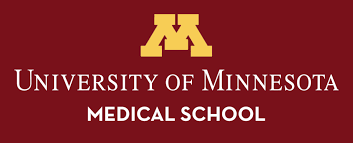
The University of Minnesota is one medical school with two campuses: the Duluth campus and the Twin Cities campus in Minneapolis. It’s also the only medical school in these cities.
Although the MD curriculum is the same for both campuses, there are slight differences. For example, only the Twin Cities campus offers the school’s dual-degree (MD/PhD) Medical Scientist Training Program. This campus, which was founded in 1851, is the flagship campus of the University of Minnesota System. It also makes the University of Minnesota one of only five universities nationwide that brings together a medical school, veterinary school, engineering school, law school and agricultural school on a single campus. The school is affiliated with the University of Minnesota Medical Center and the University of Minnesota Amplatz Children’s Hospital.
The University of Minnesota Medical School–Twin Cities campus is one of the few medical schools on our list to fare better in U.S. News & World Report’s ranking of the best medical schools for primary care (on which it ranked third) rather than for research (on which it tied for 43rd place). The school also ranked fourth in the specialty of family medicine.
The flexible MD program at the University of Minnesota is particularly well-suited for aspiring health professionals who are more interested in the experience of medical education than in rushing through the curriculum to start practicing medicine as soon as possible. Under this program, students can pursue “experiences not available in the regular curriculum” – including research experiences, community-based service learning, dual-degree programs, certificate programs and advanced courses – and receive up to six years of total medical education for the same cost as if they had completed their MD in the traditional four-year timeframe. If, however, you want to follow a more conventional format to earn your medical degree, you can do that, too.
You must have a minimum MCAT score of 495 to apply to the medical programs at the University of Minnesota. At the Twin Cities (Minneapolis) campus, the 2021 incoming class of MD students reported an average MCAT score of 509.8 and an average GPA of 3.72. Of the 3,854 prospective students who applied, 165 ultimately enrolled. The incoming class at the Duluth campus reported an average MCAT score of 504 and an average GPA of 3.67. At this campus, 1,388 prospective students applied, and 65 students eventually enrolled.
The first year of the program is the most expensive, with each year getting marginally less expensive. For first-year resident MD students, the cost of tuition and fees for the 2022 through 2023 academic year amounted to $29,934, while non-resident students paid $43,378.
10. Yale School of Medicine at Yale University

Yale School of Medicine at Yale University is ranked among the top 10 medical schools for research, according to U.S. News & World Report. The New Haven, Connecticut, medical college’s contributions to the evolution of medicine have a long history. The school, which dates back to 1810, has been the site of America’s first X-ray and use of penicillin and, in 1942, the first-ever use of chemotherapy as a cancer treatment, among other milestones. In addition to the MD program, Yale School of Medicine offers a physician assistant (PA) program, PhD and master’s programs and joint MD programs, including an MD/PhD program and combined programs in law, management and divinity.
Yale also tied for 68th place among the top medical schools for primary care. Among other major medical specialties, Yale ranked fifth for psychiatry, 9th for radiology, tied for 10th for internal medicine and 11th for obstetrics and gynecology.
The first year of the MD program at Yale School of Medicine covers an Integrated Course Curriculum. Students also begin an Interprofessional Longitudinal Clinical Experience and Medical Coaching Experiences through which they begin to build their clinical skills. Year two, which begins the summer after they start medical school, includes elective coursework and research opportunities, as well as the continuation of the Integrated Course Curriculum throughout the fall semester.
January marks the beginning of students’ clinical clerkships, which continue through December of their third year of study. Unlike other schools, Yale Medical School arranges its clinical clerkships thematically. The theme for the internal medicine and neurology clerkships is The Medical Approach to the Patient. Surgery and emergency medicine clerkships fit into the theme of The Surgical Approach to the Patient. Naturally, the clerkships involved in the Women and Children’s Health theme are obstetrics and gynecology and pediatrics. Pediatrics clerkships also fit into the Biopsychosocial Approach to Health theme, along with clerkships in primary care and psychiatry. Next, students enter an Advanced Training Period that consists of sub-internships, research experiences and electives. Students who want more from their medical education may choose to complete an optional, tuition-free fifth year of study, research or clinical experience (or some combination).
Yale School of Medicine has an acceptance rate of 4.8%, according to U.S. News. Among the 100 first-year MD students entering the program in 2020, the median GPA was 3.85, and the median MCAT score was 519.
Tuition for all years of the MD program during the 2022 through 2023 academic year was $67,484, not counting fees, living expenses, books or equipment. Generous scholarships allow MD students to graduate with, on average, a total student loan debt of $60,000 – a much more manageable amount than the national median medical school debt amount, which exceeds $200,000.
11. University of Pittsburgh School of Medicine
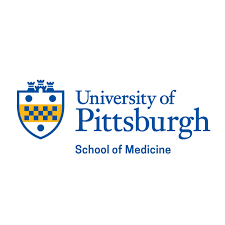
The University of Pittsburgh in Pittsburgh, PA, dates back to 1787. Since then, the public research university’s reputation for excellence and innovation has included the development of the polio vaccine and breakthroughs in DNA study and organ transplantation. It’s no surprise that the School of Medicine at the University of Pittsburgh is one of the top-ranked medical schools in the country.
U.S. News & World Report ranked the University of Pittsburgh School of Medicine as tied for 10th in the nation among the best medical schools for primary care and tied for 14th among the top medical schools for research. The medical school also earned high rankings on the publication’s lists of the best schools for the specialty of psychiatry (seventh in the nation) and surgery (tied for tenth).
Throughout the five curriculum blocks – the Foundations of Medicine, Organ Systems Pathophysiology, Evidence and Discovery, Introduction to Patient Care and Patient, Physician and Society – MD students at the University of Pittsburgh School of Medicine learn through problem-based approaches, participatory learning experiences and early opportunities for clinical experience. Students can also pursue areas of concentration in topics like infectious diseases, geriatric medicine, addiction medicine, public health, reconstructive and regenerative medicine and bioengineering, biotechnology and innovation. Students also participate in research through the Longitudinal Research Project aspect of the MD curriculum.
For the MD class admitted to the University of Pittsburgh School of Medicine in 2022, the median GPA was 3.88, and the median MCAT score was 517. Of the 8,393 total applicants, 295 were accepted, and 153 were matriculated.
The good news, if you’re not from Pennsylvania, is that non-residents won’t pay much more for tuition than residents will at the University of Pittsburgh School of Medicine. The first-year resident tuition rate for the MD program during the 2022 through 2023 academic year was $61,194 per year, while the non-resident tuition rate was $63,576. Fees for both residents and non-resident students amounted to $1,222.
12. Washington University School of Medicine

Don’t confuse the Washington University School of Medicine with the University of Washington or with other schools located in either Washington State or Washington, D.C. This nationally ranked medical school is based in St. Louis, Missouri, and offers not only an MD program but also combined degree program options in areas like population health sciences, public health, biomedical informatics, clinical investigation and business administration.
Washington University School of Medicine tied for 11th place on U.S. News & World Report’s list of the top-ranked medical schools for research and ranked 56th on the publication’s list of the top-ranked medical schools for primary care. Among other specialties, the med school tied for fourth place in radiology, tied for seventh place in internal medicine, tied for ninth place in both anesthesiology and obstetrics and gynecology and was named ninth in the nation for surgery. Forbes ranked Washington University in St. Louis as tied for 16th place on its 2019 list of America’s Top STEM Schools for Women.
The MD program at Washington University School of Medicine follows the Gateway Curriculum, which divides the program into three phases. During the preclinical Gateway to the Foundations phase, students complete 16 months of basic science coursework, clinical immersions and other foundational educational experiences. Phase Two, Gateway to Clinical Medicine, is a 12-month period during which students complete eight-week clinical clerkships in the areas of surgery, internal medicine, neurology, psychology, pediatrics and obstetrics and gynecology. For students interested in medical and biomedical research, an optional immersive research experience is available during Phase Two.
The third phase of the curriculum, Gateway to Specialization, stretches over 16 months and encompasses a required sub-internship in internal medicine, two advanced clinical rotations, two transdisciplinary Keystone Integrated Science Courses, elective courses, research opportunities and a Gateway to Residency capstone course.
For Washington University in St. Louis, U.S. News & World Report listed a medical school acceptance rate of 7.5%.The 2022 entering class reported an average GPA of 3.86, with a range between 2.77 and 4.00, and an average MCAT score of 520.2, with a range between 505 and 528.
How much will you pay to study medicine at Washington University? Tuition and fees for the 2022 through 2023 academic year equaled $69,250, not counting the cost of room and board, books, equipment and other living expenses and educational expenses.
13. Baylor College of Medicine
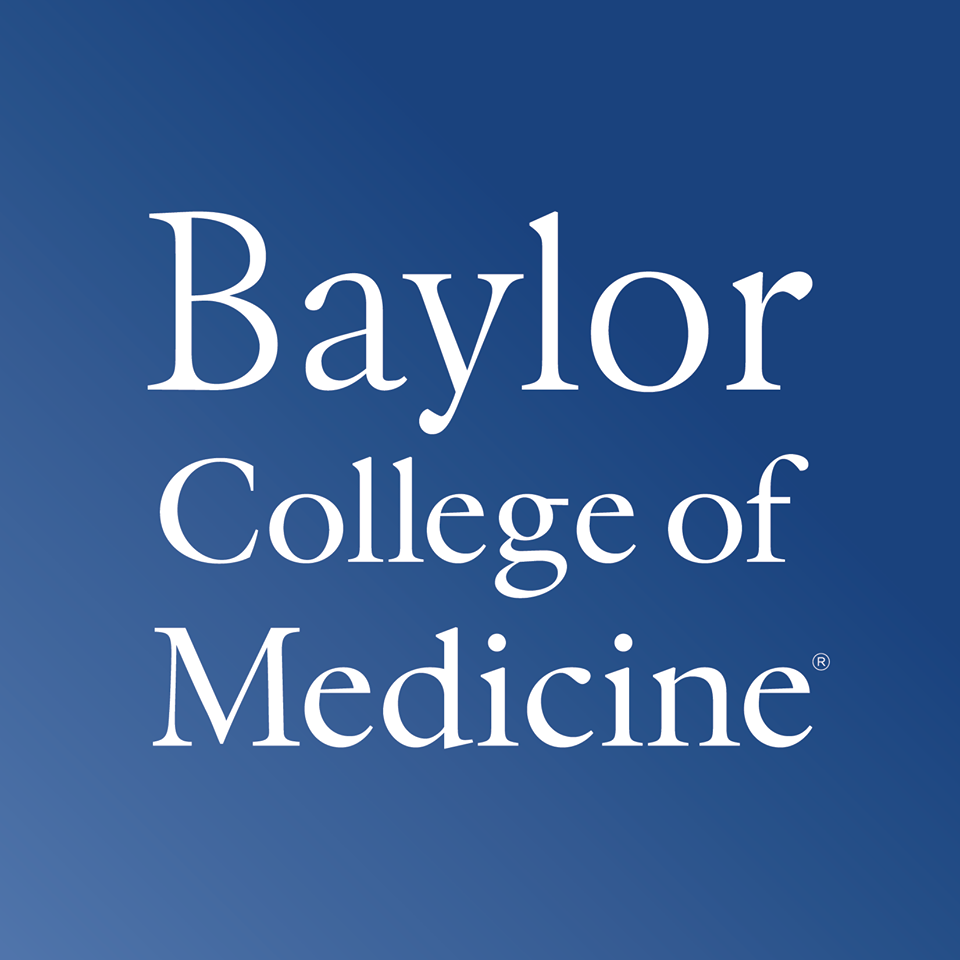
Baylor College of Medicine in Houston, TX, is affiliated with the Texas Medical Center, which is the world’s largest medical complex. The MD program at Baylor College of Medicine is small but well-regarded. The school boasts above-average scores on the USMLE Step 1 licensing exam and, in 2019, a 100% pass rate on this exam. Students at Baylor College of Medicine are consistently accepted to one of their top-choice residency opportunities.
During the first 18 months of the curriculum, MD students complete their Foundational Science coursework. They begin interacting with real patients just weeks into the program. January of students’ second year marks the start of their clinical sciences curriculum, during which they perform core clerkships in medicine, emergency medicine, family and community medicine, neurology, surgery, obstetrics and gynecology, pediatrics and psychiatry.
Baylor College of Medicine ranked well on U.S. News & World Report’s lists of the best medical schools for both research (for which it tied for 22nd in the nation) and primary care (for which it tied for 16th place), as well as placing the medical school as tied for eighth place in the specialty of pediatrics.
Of the 408 applications received, 90 applicants were interviewed, and just 14 ultimately matriculated as part of the entering class of 2022. The average GPA reported for students who matriculated during the 2022 through 2023 academic year was 3.81, and the average MCAT score was in the 95th percentile.
For tuition, fees and insurance, Texas residents studying medicine at Baylor College of Medicine paid $27,954.75 for the 2022 through 2023 school year, and non-resident students paid $41,054.75. Baylor College of Medicine students graduate with significantly less debt, on average, than students at other private medical schools and even other public medical schools, with an average debt amount of just $106,344.
14. University of Colorado School of Medicine

The University of Colorado School of Medicine in Aurora, CO, is affiliated with the UCHealth University of Colorado Hospital and Children’s Hospital Colorado. Faculty at the University of Colorado School of Medicine received more than $550 million in grant funding for their research in 2021.
Beginning with the Class of 2025, the University of Colorado School of Medicine is implementing a new curriculum, the Trek Curriculum. As they trek through their medical education, MD students will follow a path from the “Plains” (the foundational preclinical coursework) to the core clerkships that make up the “Foothills” and then the advanced clinical experience, basic science coursework and leadership training that comprise the “Alpine” stage of study. Students end their med school experience at the “Summit,” where they complete courses that focus on the transition to residency.
U.S. News & World Report ranked the University of Colorado School of Medicine sixth in the nation among the best medical schools for primary care and 27th among the top medical schools for research. The institution landed spots in the top 10 for the medical specialties of pediatrics and family medicine.
Admission to the University of Colorado School of Medicine is competitive. Each year, the school receives more than 10,000 applications for just 184 spots.
For the 2022 through 2023 academic year, resident students paid $43,450 in tuition and fees for their first year of the MD program. The school charges non-resident students $83,290 in tuition and fees, but, per its policies, the Medical MD Non-Resident Rate “will only be charged if the non-resident student voluntarily chooses to withdraw from medical school after completing the first year for any reason other than medical disability.”
15. University of Michigan Medical School
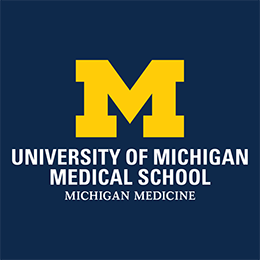
At the University of Michigan Medical School in Ann Arbor, MI, you will encounter a competency-based curriculum, which is rare among top-ranked medical schools. Learning experiences both inside and outside the classroom help students develop competencies across four areas: foundational scientific and clinical knowledge, longitudinal learning in a small-group community, individualized directed professional development and applied leadership education for the clinical environment and beyond.
Rather than splitting the curriculum into two years of didactic coursework and two years of clinical rotations, as most medical schools do, the University of Michigan Medical School incorporates both scientific education and clinical training into all four years of study. The program consists of “trunks” that are more standardized and “branches” that are more individualized. The scientific trunk that makes up the first year of medical school is primarily preclinical in focus and is followed by the clinical trunk in year two. All students complete clinical clerkships in internal medicine, surgery, pediatrics, obstetrics and gynecology, family medicine, psychiatry and neurology. In years three and four, students choose from one of four branches to focus on: Patients and Populations, Procedure-Based Care, Diagnostics and Therapeutics and Systems and Hospital-Based Care.
In addition to the MD program, the University of Michigan Medical School offers PhDs in 13 disciplines and MD/PhD combined degree programs for students interested in both clinical practice of medicine and medical research.
The Leapfrog Group named the hospital affiliated with the University of Michigan Medical School, University of Michigan Health, one of its Top Teaching Hospitals in 2022. U.S. News & World Report ranked the school 17th among the best medical schools for research and 20th among the top medical schools for primary care.
Among medical specialties, the school ranked fourth in the nation for obstetrics and gynecology, sixth for surgery, tied for seventh for both anesthesiology and internal medicine, eighth for radiology, eleventh for both family medicine and psychiatry and 12th for pediatrics.
Of the 9,385 prospective medical students who applied to the University of Michigan MD program, only 168 ended up being part of the entering class of 2022. The class’s average GPA for all subjects was 3.8, and the average GPA for undergraduate science coursework, specifically, was 3.75. The average MCAT percentile of matriculated students was 91.12.
Under the 2022 through 2023 tuition rates, Michigan residents are looking at total tuition and fees costs of $50,763 for each of the first three 12-month sessions and $33,842 for the last 8-month branch of their studies. For non-resident students, these costs climb to $70,212 for each of the first three 12-month sessions and $46,808 for the last 8-month branch.
16. Vanderbilt University School of Medicine

Like many other medical schools, Vanderbilt University School of Medicine in Nashville, Tennessee, has upgraded its curriculum to meet the ever-evolving needs of the field of medicine. The school has named its innovative curriculum “Curriculum 2.0.”
Year one of the MD curriculum at Vanderbilt University School of Medicine begins with 13 months of study in the Foundations of Medical Knowledge. During year two, which is dedicated to the Foundations of Clinical Care, students complete core clerkships in medicine, surgery, neurology, psychiatry, obstetrics and gynecology and pediatrics. The theme of years three and four is immersion. During these years, students use their electives to immerse themselves in clinical, academic and research-based learning experiences, including an internship, that allow them to develop a personalized pathway that reflects their clinical and research interests.
The school ranked 13th in the nation on U.S. News & World Report’s list of the best medical schools for research and tied for 43rd place among the top medical schools for primary care. It also ranked well in the specialties of internal medicine, for which it tied for tenth place, and anesthesiology, for which it tied for twelfth place.
Of 7,410 applicants, only 96 ultimately enrolled as part of the incoming MD class of 2021. Among matriculated students, the undergraduate GPA range was 3.5 to 4.0 and MCAT scores fell between the 74th and 100 percentiles.
For the 2022 through 2023 school year, tuition for every year of the MD program amounted to $64,882, not counting fees, living expenses or other educational expenses.
17. University of Massachusetts Chan Medical School

The University of Massachusetts Chan Medical School is located in New England’s second-largest city, Worcester, MA. This institution is also the only public medical school in the state. Under the school’s “competency-driven” Learner-centered Integrated Curriculum (LInC), students develop an understanding of the physician in their numerous roles – as a professional, a scientist, a clinical problem solver, a patient and community advocate and a person.
The curriculum at UMass Chan Medical School begins with a Transition to Medical School orientation and students’ first year of preclinical Foundations of Medicine coursework, which continues through the second year of the program. The third year of medical school encompasses clinical experiences in surgery, family medicine, internal medicine, obstetrics and gynecology, pediatrics, psychiatry and neurology. In their fourth year, students undertake an Advanced Studies Curriculum that includes a sub-internship in one of four areas of interest, elective coursework, a two-week Advanced Biomedical and Translational Sciences course and a four-week Emergency Clinical Problem Solver course. Students may apply to extend their studies for a fifth year to further their clinical experience, research experience or international experience.
On U.S. News & World Report’s rankings lists, the University of Massachusetts Chan Medical School tied for 10th place among the best medical schools for primary care and tied for 47th place among the top medical schools for research.
The Class of 2025 MD students at UMass Chan Medical School consisted of 120 Massachusetts residents and 47 out-of-state students selected out of 3,769 completed applications. Entering students reported an average GPA of 3.76 and an average MCAT score of 515, which corresponded with the 88th percentile of exam scores.
During the 2022 through 2023 academic year, in-state students at UMass Chan Medical School paid $37,120 in tuition plus fees. Out-of-state students paid $63,832 in tuition. For MD students whose education goes longer than eight full terms, a $7,106 “Extended Program Fee” is charged in lieu of tuition.
18. University of Texas Southwestern Medical Center

Clinical training within the first year of med school is a hallmark of MD education at the University of Texas Southwestern Medical Center in Dallas, TX. Throughout their MD training, students have the opportunity to gain clinical experience at state-of-the-art medical facilities at Parkland Memorial Hospital, William P. Clements Jr. University Hospital, Children’s Health Children’s Medical Center Dallas and the Zale Lipshy Pavilion at William P. Clements Jr. University Hospital.
The first year and a half of the program is dedicated to pre-clerkship coursework that is offered on a pass/fail basis and delivered through team-based learning experiences. The second semester of students’ second year marks the beginning of clerkship clinical experiences, which encompass 48 weeks of training in the fields of internal medicine, surgery, family medicine, ambulatory care, obstetrics and gynecology, pediatrics, neurology and psychiatry. Year four is the post-clerkship year, which encompasses required sub-internship rotations in critical care and emergency care, 18 weeks of electives, a Frontiers in Medicine course, a Physicians and Society course and a Residency Essentials course.
U.S. News & World Report ranked the University of Texas Southwestern Medical Center as tied for 16th place among the best medical schools for primary care and tied for 25th place among the best medical schools for research.
The average GPA of students who matriculated into the UT Southwestern Medical Class of 2025 was 3.88, and the average MCAT score was 516. U.S. News & World Report listed the medical school acceptance rate of the University of Texas Southwestern Medical Center as 6% in 2022.
Tuition and fees for first-year MD students who are Texas residents amounted to $23,023 for the 2023 through 2024 academic year. This cost is noticeably more affordable than the $37,080 tuition and fees amount for the average public medical school and the $58,889 tuition and fees amount for the average private medical school. The average student debt for UT Southwestern Medical Center graduates, $131,699, was well below the average public medical school debt ($194,558) and private medical school debt ($222,899).
19. University of North Carolina-Chapel Hill

The University of North Carolina–Chapel Hill School of Medicine in Chapel Hill, NC, is an excellent option for aspiring MD students interested in primary care practice.
U.S. News & World Report ranked UNC School of Medicine fifth in the nation among the best medical schools for primary care, third for the specialty of family medicine and tied for 25th among the best medical schools for research.
Since August 2014, the University of North Carolina–Chapel Hill School of Medicine has followed the Translational Education at Carolina (TEC) curriculum, which encompasses three phases. The Foundation Phase, which makes up the first three semesters of an MD student’s education, consists of integrated coursework in basic science that is delivered in organ-based blocks. In the Application Phase, students complete 12 months of clerkships at the clinical campus of Charlotte, Wilmington, Asheville or Central, which includes the Chapel Hill area.
During the Individualization Phase, students can customize their medical education and training with electives and research opportunities. Students also complete studies in social and health systems science, two internships, clinical experiences in critical care and the science of medicine, one advanced clinical experience and Transition to Residency coursework.
Out of the approximately 7,000 applicants to the medical school each year, around 190 matriculate into the entering class. The average MCAT score for matriculating students is 512. The average GPA for undergraduate science coursework is 3.79, and the average GPA for non-science coursework is 3.66.
Resident students in the medical doctorate program at the University of North Carolina–Chapel Hill School of Medicine paid $35,154 in tuition and fees for the 2021 through 2022 academic year. For out-of-state students, tuition and fees amounted to $63,114.
20. University of Chicago Pritzker School of Medicine

The Pritzker School of Medicine, part of the University of Chicago in Chicago, IL, appeals to students who are interested in scholarship as well as clinical practice. Scholarship & Discovery is part of the curriculum for three out of the four years of med school. Students interested in scholarship may pursue further exploration of scholarly tracks in the fields of medical education, community health, global health, clinical research, health services and data science, basic and translational science, health care improvement science or basic/translational sciences.
In their first semester, students complete basic science coursework and a Scholarship & Discovery elective in a subject like Improving Scientific Communication & Addressing Misinformation or oncology-associated research. Year two of medical school builds upon students’ foundation of preclinical coursework with classes in areas like pharmacology, medical neurobiology, clinical pathophysiology and therapeutics and clinical skills. The third year is the clerkship year, when students complete clinical experiences in medicine, surgery, psychiatry, neurology, pediatrics and obstetrics and gynecology. In their fourth year, students complete an Emergency Medicine senior rotation at the University of Chicago ER or at the NorthShore ER, as well as an inpatient sub-internship and elective learning experiences.
RELATED: Does an ER Doctor Receive Any Special Training in Medical School?
U.S. News & World Report ranked the University of Chicago as tied for 20th on its list of the best medical schools for research and tied for 30th among the best medical schools for primary care. The University of Chicago as a whole also claimed a spot (tied for 16th place) on the 2019 Forbes list of America’s Top STEM Schools for Women.
For the Pritzker School of Medicine at the University of Chicago, U.S. News & World Report listed an acceptance rate of 3.2% in 2022. The most recent entering class reported a cumulative GPA range of 3.3 to 4.0 and a science GPA range of 3.2 to 4.0. The range of MCAT score percentiles for matriculated students encompassed the 68th to 100th percentile.
Under the 2022 through 2023 cost of attendance, MD students at the University of Chicago Pritzker School of Medicine paid $58,836 for their first and second years of medical school (each consisting of three quarters) and $78,063 for their four-quarter third and fourth years of study. Tuition costs increase by approximately 2%–4% each year, so don’t be surprised if your later years of schooling cost more than third- and fourth-year students are paying during the year you enroll in the program.
21. University of Washington School of Medicine
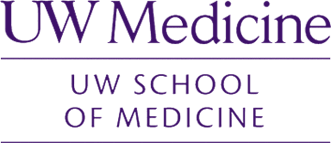
The University of Washington School of Medicine in Seattle, WA, is a public medical school primarily for students in the Washington, Wyoming, Alaska, Montana and Idaho region of the U.S. From U.S. News & World Report, the institution earned the ranking of the best medical school in the nation for primary care and the ninth best medical school for research. The publication also ranked the University of Washington School of Medicine #1 in the specialty of family medicine, #6 in the specialty of pediatrics, #10 among the schools with the most graduates practicing in primary care, #20 among schools with the most graduates practicing in medically underserved areas and #22 among schools with the most graduates practicing rural medicine.
The first phase of the MD program, the Foundations portion of the curriculum, consists of coursework in molecular and cellular biology, clinical invaders and defenders, circulatory systems, energetics and homeostasis, musculoskeletal systems and blood and cancer. This stage of the program takes up the first two years of the medical school curriculum. Students complete this coursework at locations in one of six regional sites: Seattle or Spokane in Washington, Laramie in Wyoming, Anchorage in Alaska, Bozeman in Montana or Moscow in Idaho.
During the patient care phase of the program in year three, students complete required clinical clerkships in specialties like family medicine, internal medicine, psychiatry, surgery, pediatrics and gynecology and obstetrics over the course of 42 weeks. Students’ fourth year of medical school instruction brings them to the third phase of the program, Explore and Focus, in which they complete required clinical clerkships in advanced patient care, emergency medicine and neurology and neurosurgery, as well as elective clerkships.
All practicing physicians in the United States are required to continue their medical training through residencies after they graduate medical school, but making this transition between med school and residency isn’t easy. One thing we like about the MD curriculum at the University of Washington School of Medicine is the Transition to Residency course students take in their fourth and final year of medical school.
The majority of accepted applicants had a GPA of 3.4 or higher and an MCAT score of 494 or higher. Of the 7,632 prospective students who applied in 2022, only 270 were accepted. Because the University of Washington School of Medicine was developed specifically to train physicians in the Washington, Wyoming, Alaska, Montana and Idaho region, this medical education program strongly favors students from these states, with 96% of the entering class being residents of these states.
Tuition and fees data for the University of Washington School of Medicine is complicated, because the cost of attendance calculations differ not only by year of study but also between the different states represented in the region. Generally, the average tuition cost for the first, third and fourth years of study is slightly above $53,000. U.S. News & World Report lists an in-state full-time tuition rate of $39,906 and an out-of-state tuition rate of $70,569.
22. Oregon Health and Science University

If you can’t wait to start your clinical training – and bring much-needed medical care to the people who need it most – Oregon Health and Science University in Portland, OR, might be for you. The school emphasizes early clinical experience and 18 “threads” of subject matter, ranging from cell biology and pharmacology to health policy, professionalism and communication, that are woven throughout the curriculum. One thing we love about Oregon Health and Science University is its emphasis on reaching underserved patients through the free, student-run Bridges Collaborative Care Clinic.
The MD curriculum at Oregon Health and Science University includes a Foundations of Medical Phase and a Clinical Experience Phase. Core clinical experiences in the program include internal medicine, family medicine, obstetrics and gynecology, pediatrics, neurology, surgery and psychiatry. Students must also complete a rural rotation and satisfy a continuity clinical experience requirement.
U.S. News & World Report ranked Oregon Health and Science University fourth in the nation among the best medical schools for primary care, second for the specialty of family medicine and tied for 32nd among the best medical schools for research.
Of the 6,700+ applications the Oregon Health and Science University received for its MD program, 570 applicants were offered an interview. Admissions offers were extended to more than 230 applicants. The entering class reported an average GPA of 3.65 for all subjects and an average GPA of 3.58 for undergraduate science coursework. The average MCAT score for the entering class was 509. The school gives “strong preference” to MD applicants who are Oregon residents and non-residents with Oregon Heritage. Although Oregon residents made up just 7% of all applicants, they made up 84% of the entering class.
Oregon Health and Science University charged first-year MD students a resident tuition rate of $11,537.00 and a non-resident tuition rate of $17,734.00 per term for the 2022 through 2023 academic year. The school promises not to raise tuition for students enrolled in the MD program throughout their education, as long as they complete the curriculum in a “reasonable timeframe.”
23. University of Wisconsin–Madison School of Medicine and Public Health

Students pursuing their MD at the University of Wisconsin–Madison School of Medicine and Public Health in Madison, WI, learn to practice medicine according to the school’s ForWard Curriculum. The program brings together a collaborative competency-based curriculum, team-based learning experiences, early entry into clinical clerkships and longitudinal coaching and practice opportunities. After starting the program with three course-focused semesters, students dive into a year of clinical rotations divided into four themes: Care Across the Life Cycle, Chronic and Preventive Care, Acute Care and Surgical and Procedural Care. During Phase 3, MD students spend the last 16 months of their program exploring careers through basic science elective courses and advanced clinical experiences, including required inpatient and ambulatory care internships.
U.S. News & World Report ranked the University of Wisconsin as tied for 20th in the nation among the best medical schools for primary care and tied for 37th among the best medical schools for research. The publication also ranked this medical school fifth in the nation for the specialty of family medicine.
A major focus of the program is developing a physician workforce to improve health care for Wisconsin residents. As a result, preference is given to applicants from Wisconsin – so much so that at least 70% of the matriculating class each year consists of in-state students.
Of the 5,625 total applications the medical school received for its most recent entering class – 714 of which were submitted by Wisconsin residents – just 176 applicants eventually became part of the entering class. Wisconsin residents accounted for 123 of these spots, with only 52 spots going to out-of-state students. Students in the entering class reported an average GPA of 3.69 and an average MCAT score of 511.
Tuition and fees for resident medical students amounted to $41,130.00 for the 2022 through 2023 academic year. Students applying from out of state must pay a non-resident tuition add-on amount of $16,176.00.
24. University of Iowa Carver College of Medicine
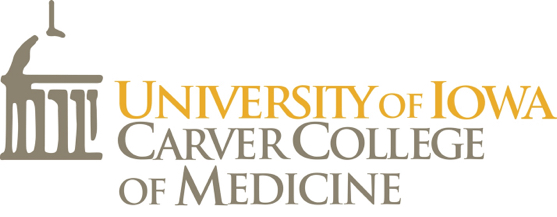
The New Horizons MD Curriculum that guides physician preparation at the University of Iowa Roy. J. and Lucille A. Carver College of Medicine in Iowa City, IA, emphasizes the three “I’s”: innovation, integration and individualization.
Throughout the program, students focus on the interwoven aspects of the Mechanisms of Health and Disease, Medicine and Society, and Clinical and Professional Skills. Carver College of Medicine students begin their clinical experiences during their very first week of medical school, during their preclinical coursework, and start core clerkships at the end of their third semester. Completing their core clerkships early allows students to dedicate the final three semesters of their medical education to advanced, individualized learning experiences that include interdisciplinary coursework, elective clerkships and advanced inpatient sub-internships.
Students can also get involved in the CCOM Rural Iowa Scholars Program, which aims to prepare new physicians to provide care for patients in the 360+ Health Professional Shortage Areas that are located primarily in the rural areas of the state.
U.S. News & World Report ranked the University of Iowa as tied for 16th place among the best medical schools in the nation for primary care and tied for 41st place among the best medical schools for research.
For the University of Iowa Carver College of Medicine, U.S. News & World Report put the acceptance rate at around 7%. Among the entering class of 2022, the average GPA was 3.79, and the average MCAT score was 513. However, more than two-thirds of the entering class of MD students – 100 out of the 143 total students – were Iowa residents. Iowa residents are considered in a separate applicant pool from out-of-state applicants and are given preference, with approximately 70% of each entering class being resident students.
Iowa residents aren’t’ only more likely to get accepted to the Carver College of Medicine – they also pay less for a medical education here. Medical student tuition and fees for the 2022 through 2023 school year amounted to $37,863 for residents and $58,638 for out-of-state students.
25. Wayne State University School of Medicine
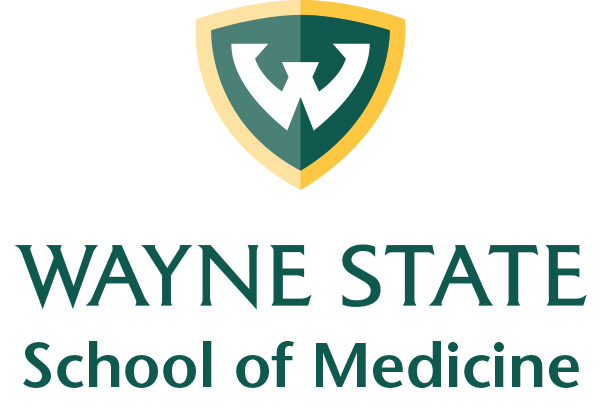
A fear that often plagues aspiring physicians is getting all the way through medical school only to fail to secure a residency match – effectively preventing you from getting to practice medicine. If you worry about your future residency match, consider applying to Wayne State University School of Medicine in Detroit, Michigan, which boasts a 99% total success match rate that’s significantly better than the national average.
The urban medical school landed spots in the top 100 on U.S. News & World Report’s rankings of medical schools for both research (tied for 68th place) and primary care (tied for 86th place).
The school’s traditional MD curriculum follows the Highways to Excellence curriculum, which includes organ systems-based coursework and clinical experiences throughout the curriculum and opportunities for service-learning, research, teaching and community engagement. The curriculum at Wayne State University School of Medicine emphasizes compassionate and high-quality patient care, professionalism and an obligation to work to decrease health disparities. Required clerkships include surgery, internal medicine, family medicine, psychiatry, neurology, pediatrics and obstetrics and gynecology. The school also offers a three-year MD program.
Wayne State University School of Medicine received 8,017 applications to the MD program in 2022 and ultimately accepted 300 students, nearly two-thirds of whom were in-state students. MCAT scores for MD students entering as part of the Class of 2026 ranged from 504 to 518, and undergraduate GPAs of these students ranged from 3.51 to 3.98.
Tuition and fees for MD students in any year of study at Wayne State School of Medicine amounted to $39,502 for Michigan residents and $67,200 for non-resident students for the 2022 through 2023 school year.
Related Resources:
Top 25 Physician Assistant (PA) Degree Programs
What Degree Should I Get for Medical School?

